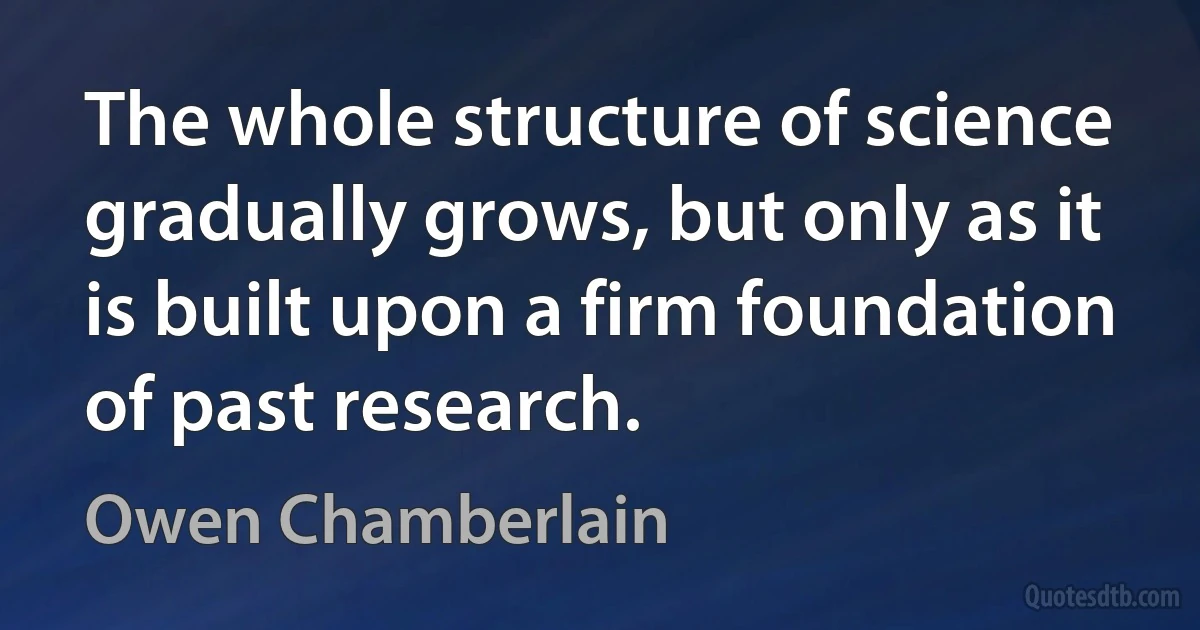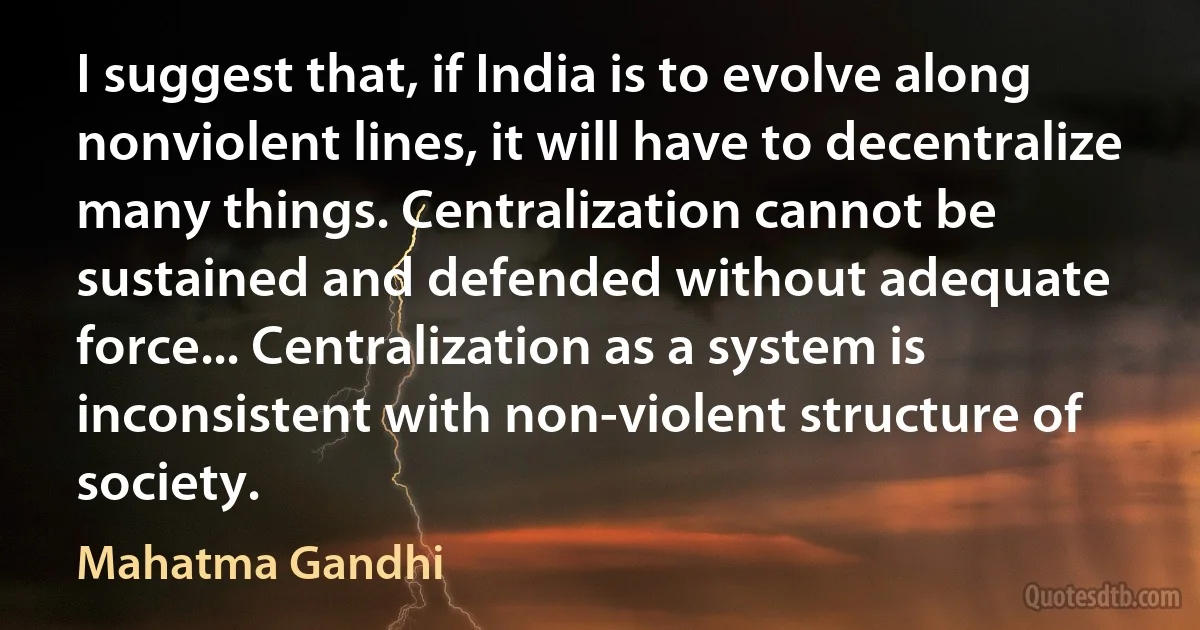Structure Quotes - page 10
Britain for a long time had a reflection of its class structure which meant that people like, well, J. B. S. Haldane who was the nephew of Lord Haldane, or Bertrand Russell who became Lord Russell, could do what they pleased, and it's interesting to think that Bertrand Russell never had a job, he never had to compete for a job. Haldane had four or five different jobs in his life, totally different. He probably could have - if he had been bothered - have just abandoned his job and went on to live otherwise. ... But this no longer exists. IBM no longer exists. I don't see a place now where somebody like myself who combined, let's say, unusual gifts and unusual tastes and, who everybody said has promise, was certainly a misfit of the worst kind could find a position at this point and I think that a tragedy.

Benoît Mandelbrot
Nature never "fails." Nature complies with its own laws. Nature is the law. When Man lacks understanding of Nature's laws and a Man-contrived structure buckles unexpectedly, it does not fail. It only demonstrates that Man did not understand Nature's laws and behaviors. Nothing failed. Man's knowledge or estimating was inadequate.

Buckminster Fuller
The proof of the pudding is in the eating. There was a widespread myth of the 1970s, a myth along Tom Kuhn's (1962) Structure of Scientific Revolutions lines. The Keynesianism, which worked so well in Camelot and brought forth a long epoch of price-level stability with good Q growth and nearly full employment, gave way to a new and quite different macro view after 1966. A new paradigm, monistic monetarism, so the tale narrates, gave a better fit. And therefore King Keynes lost self esteem and public esteem. The King is dead. Long live King Milton!
Contemplate the true facts. Examine 10 prominent best forecasting models 1950 to 1980: Wharton, Townsend–Greenspan, Michigan Model, St. Louis Reserve Bank, Citibank Economic Department under Walter Wriston's choice of Lief Olson, et cetera. ... M did matter as for almost everyone. But never did M alone matter systemically, as post-1950 Friedman monetarism professed.

Paul Samuelson
Man bears in his bodily structure clear traces of his descent from some lower form; but it may be urged that, as man differs so greatly in his mental power from all other animals, there must be some error in this conclusion. No doubt the difference in this respect is enormous, even if we compare the mind of one of the lowest savages, who has no words to express any number higher than four, and who uses no abstract terms for the commonest objects or affections, with that of the most highly organised ape.

Charles Darwin
Women over fifty already form one of the largest groups in the population structure of the western world. As long as they like themselves, they will not be an oppressed minority. In order to like themselves they must reject trivialization by others of who and what they are. A grown woman should not have to masquerade as a girl in order to remain in the land of the living.

Germaine Greer
Russia today is a Soviet country, and its government is run by representatives of the workers and peasants. In some ways it it the most advanced country in the world. Whatever actual conditions may be, the whole structure of government and society is based on the principle of social equality.

Jawaharlal Nehru
Through the means just specified, aided perhaps by others as yet undiscovered, man has been raised to his present state. But since he attained to the rank of manhood, he has diverged into distinct races, or as they may be more appropriately called sub-species. Some of these, for instance the Negro and European, are so distinct that, if specimens had been brought to a naturalist without any further information, they would undoubtedly have been considered by him as good and true species. Nevertheless all the races agree in so many unimportant details of structure and in so many mental peculiarities, that these can be accounted for only through inheritance from a common progenitor; and a progenitor thus characterised would probably have deserved to rank as man.

Charles Darwin
Now when naturalists observe a close agreement in numerous small details of habits, tastes and dispositions between two or more domestic races, or between nearly-allied natural forms, they use this fact as an argument that all are descended from a common progenitor who was thus endowed; and consequently that all should be classed under the same species. The same argument may be applied with much force to the races of man.
As it is improbable that the numerous and unimportant points of resemblance between the several races of man in bodily structure and mental faculties (I do not here refer to similar customs) should all have been independently acquired, they must have been inherited from progenitors who were thus characterised.

Charles Darwin
I believe that animals have descended from at most only four or five progenitors, and plants from an equal or lesser number.Analogy would lead me one step further, namely, to the belief that all animals and plants have descended from some one prototype. But analogy may be a deceitful guide. Nevertheless all living things have much in common, in their chemical composition, their germinal vesicles, their cellular structure, and their laws of growth and reproduction. We see this even in so trifling a circumstance as that the same poison often similarly affects plants and animals; or that the poison secreted by the gall-fly produces monstrous growths on the wild rose or oak-tree. Therefore I should infer from analogy that probably all the organic beings which have ever lived on this earth have descended from some one primordial form, into which life was first breathed by the Creator.

Charles Darwin


![[Nelson] "...People are crazy. At times when I'm with clients I can't see the difference between them and me, except for the structure we're all in. I get paid, a little, and they get taken care of, a little." (John Updike)](https://cdn.quotesdtb.com/img/quotes_images_webp/13/john-updike-care-crazy-431013.webp)
